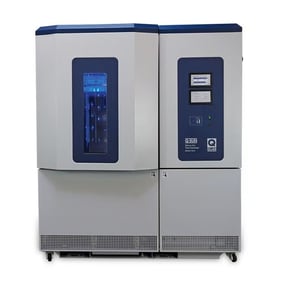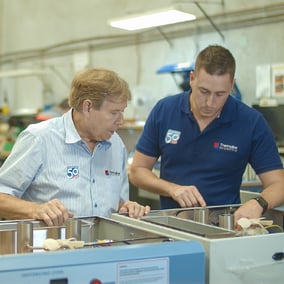In today's rapidly evolving industries, ensuring the durability and longevity of products is more important than ever. From automotive components to building materials, understanding how materials perform under various environmental conditions is crucial. This is where laboratory weathering testing comes into play. But what exactly is laboratory weathering, and how does it replicate the natural environmental conditions to provide meaningful insights into product performance? Let’s dive into the science behind it.

What is Laboratory Weathering?
Laboratory weathering is a controlled process that mimics the effects of long-term exposure to outdoor weather conditions. This method allows manufacturers to assess how materials, coatings, and products will hold up to real-world weather elements, such as ultraviolet (UV) light, temperature fluctuations, and humidity. By simulating these environmental factors in a lab, researchers can accelerate the weathering process, providing valuable data in a fraction of the time it would take for natural weathering to occur.
The Roles of UV Exposure, Temperature Cycling, and Humidity in Laboratory Weathering Testing
In laboratory weathering testing, the primary goal is to simulate real-world environmental conditions to assess how materials will hold up over time. Three of the most crucial factors in this simulation are ultraviolet (UV) exposure, temperature cycling, and humidity. Each of these environmental elements plays a unique and significant role in determining the durability and longevity of materials. Let’s explore the roles of each in more detail.
1. UV Exposure
UV radiation is one of the most significant environmental stressors for materials exposed to outdoor conditions. Over time, UV rays can cause several types of degradation, including:
- Fading: UV exposure causes pigments in paints, coatings, and textiles to break down, leading to fading and discolouration.
- Chemical Breakdown: UV rays can cause chemical bonds within polymers and plastics to weaken, resulting in a reduction in mechanical strength, flexibility, and appearance.
- Cracking and Brittle Behaviour: Prolonged exposure to UV light can lead to the surface of materials becoming brittle, which may cause cracking or other structural damage.
In laboratory weathering tests, UV exposure is simulated using specially designed UV light chambers. These chambers can replicate the intensity, wavelength, and duration of sunlight, enabling materials to undergo accelerated degradation. The UV exposure test helps manufacturers understand how a product will react to prolonged sunlight exposure, whether it’s a paint coating on an outdoor structure or a plastic component used in an automotive part.
2. Temperature Cycling
Temperature fluctuations are another critical factor in weathering. Outdoor environments experience varying temperatures throughout the day and year, often swinging between extremes. These fluctuations can place significant stress on materials as they expand and contract with the temperature changes. In laboratory settings, temperature cycling replicates this process by subjecting materials to rapid temperature changes, which can lead to:
- Expansion and Contraction: Materials expand when heated and contract when cooled. This cyclical movement can cause mechanical stress and lead to cracking, warping, or deformation over time.
- Stress and Fatigue: Repeated thermal cycling can induce thermal fatigue, causing materials to degrade faster. For example, adhesives, paints, and seals may fail after repeated exposure to heat and cold cycles.
- Changes in Material Properties: Temperature variations can alter the physical properties of materials, such as hardness, flexibility, and elasticity. In some cases, extreme heat may soften materials, while cold temperatures can make them brittle.
In laboratory weathering tests, materials are subjected to a temperature range that mimics the conditions they would experience outdoors—from hot summer days to cold winter nights. By using temperature-controlled chambers, researchers can rapidly cycle between high and low temperatures, accelerating the testing process and gaining valuable insights into how materials will respond to thermal stress over time.
3. Humidity
Humidity levels in the environment can have profound effects on materials, particularly those that are sensitive to moisture. Whether it’s the high humidity of coastal regions or the dry heat of desert areas, exposure to moisture can cause a variety of degradation processes, including:
- Corrosion: Metals exposed to high humidity are prone to rust and corrosion, especially in the presence of saltwater, which accelerates this process.
- Swelling and Warping: Some materials, such as wood and certain plastics, can absorb moisture and expand or warp, leading to dimensional instability.
- Mould and Mildew Growth: Excess moisture can encourage the growth of mould and mildew on surfaces, particularly in materials like fabrics, paints, and wood.
- Reduced Adhesion: Humidity can interfere with the bonding strength of adhesives, coatings, and paints, leading to peeling, cracking, or blistering.
Humidity tests in laboratory weathering are conducted in climate-controlled chambers that can simulate high or low humidity levels, as well as fluctuating moisture content. These chambers can subject materials to constant humidity or alternate between wet and dry conditions to assess how different moisture levels affect material properties. This helps manufacturers determine how products will perform in various climates, from humid coastal environments to dry, arid regions.
Accelerated Weathering: Benefits and Insights
By combining UV exposure, temperature cycling, and humidity in testing, laboratory weathering allows manufacturers to simulate years of outdoor wear and tear in just a few weeks or months. The benefit of accelerated testing is clear: it helps predict how materials will perform in real-world conditions, allowing manufacturers to make informed decisions about product durability and quality.
Through laboratory weathering, businesses can:
- Identify potential weaknesses in products before they hit the market.
- Improve product formulations and materials to enhance performance.
- Meet industry standards and regulations for product durability.
- Ensure customer satisfaction by offering long-lasting, reliable products.
Conclusion
Laboratory weathering is a powerful tool that helps industries test and improve the durability of their products in a controlled setting. By simulating the natural environmental conditions of UV exposure, temperature cycling, and humidity, manufacturers can gain valuable insights into how their materials will perform over time. This not only helps to ensure product longevity but also plays a crucial role in meeting safety and quality standards. Whether it’s building materials, automotive components, or consumer goods, laboratory weathering is a vital step in developing products that can withstand the challenges of the real world.






